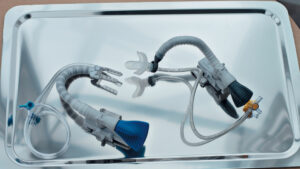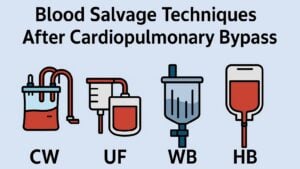The study titled “Intra-aortic Balloon Pump in Patients Undergoing VA-ECMO: An Analysis of the Chinese Extracorporeal Life Support Registry” provides comprehensive insights into the use of intra-aortic balloon pump (IABP) alongside venoarterial extracorporeal membrane oxygenation (VA-ECMO) for patients suffering from cardiogenic shock (CS) or cardiac arrest (CA). This analysis, grounded in data from the Chinese Extracorporeal Life Support (CSECLS) registry, evaluates the in-hospital outcomes of CS patients treated with VA-ECMO, with and without the addition of IABP.
VA-ECMO is increasingly recognized as a critical intervention for refractory CS or CA over recent decades. However, its utility in increasing left ventricular (LV) afterload can compromise myocardial recovery, potentially leading to suboptimal outcomes. The role of IABP in this context has been suggested to alleviate LV load in patients on VA-ECMO support, though its effectiveness remains a subject of debate.
The CSECLS registry serves as a voluntary database, aggregating information on ECMO usage, complications, and patient outcomes across over 112 member centers in China. This study particularly focused on adults (≥ 18 years) who underwent femoro-femoral VA-ECMO with or without the addition of IABP from January 1, 2017, through August 31, 2022, excluding those who received central cannulation or other LV unloading strategies. Primary outcomes revolved around in-hospital mortality, while secondary outcomes included survival post-ECMO weaning, need for continuous renal replacement therapy (CRRT), cannulation site bleeding, and limb ischemia.
The study included a total of 4,755 VA-ECMO patients, with 1,147 (30.4%) in the IABP group and 3,308 (69.6%) in the non-IABP group. Those in the IABP group tended to be older, predominantly male, heavier, and more likely to suffer from acute myocardial infarction (AMI) as the primary CS cause. Interestingly, while no significant difference was noted in in-hospital mortality rates between the groups, the IABP group exhibited higher instances of CRRT and limb ischemia. Multivariable logistic regression analyses, after adjusting for various factors, indicated similar in-hospital mortality rates between groups but highlighted an increased incidence of CRRT and limb ischemia with IABP use.
Contrary to expectations and previous studies, IABP was not associated with lower in-hospital mortality in this large cohort study. This observation suggests the potentially limited efficacy of IABP in LV unloading within the VA-ECMO patient population. Additionally, the study points to organ complications as the primary causes of hospital deaths among patients undergoing VA-ECMO, with IABP possibly exacerbating the risk of neurological complications and renal failure.
Despite the insights provided, the study acknowledges its observational nature as a limitation, highlighting the potential for residual and unmeasured confounding factors. It also notes that most IABP devices were placed before VA-ECMO initiation, indicating a pre-existing severity in patients escalated from IABP to VA-ECMO.
In conclusion, while the study does not support the routine use of IABP for patients treated with VA-ECMO due to the lack of demonstrated benefits in reducing in-hospital mortality and the increased risk of CRRT and limb ischemia, it underscores the importance of clinical judgment in decision-making. It calls for randomized clinical trials to further explore the impact of IABP usage in this patient demographic.







